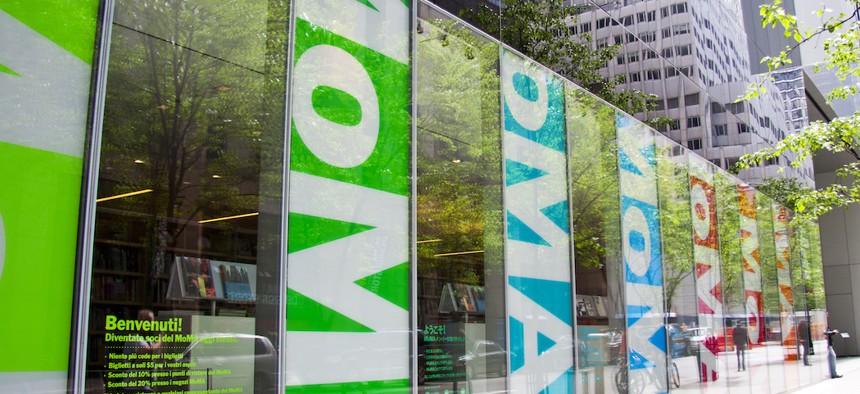On March 12, Broadway shows were halted when Gov. Andrew Cuomo banned large gatherings of more than 500 people in an effort to contain the coronavirus. Now it’s possible that New York City’s famed theaters could remain closed until 2021.
In May, NYC & Company, the city’s marketing and tourism arm, said it had created The Coalition for NYC Hospitality & Tourism Recovery, which is dedicated to reviving the city’s many tourist attractions. “From Broadway houses to independent theaters, from marquee attractions to small businesses and restaurants, our beloved five boroughs tell a story unlike any other place in the world,” playwright Lin-Manuel Miranda, a member of the coalition, said in a press release announcing its formation. “Together, we will create a next act for our city. After this intermission, we will be ready to welcome the world back with open arms, so people can fall in love with New York over and over again.”
While the coalition helps the city’s major attractions get back up and running, it is clear that New Yorkers are eager to leave their homes and enjoy the city. “I don't think it’s tenable for humans to shelter in place indefinitely or for long swathes of time,” Dustin Duncan, an associate professor of epidemiology at Columbia University’s Mailman School of Public Health, told City & State. “I don’t think that’s possible.”
Duncan said lawmakers can help New Yorkers assess the risk of leaving their homes and doing different types of activities, which will enable them to make better decisions for themselves and others. Leaders can do this by clearly communicating the spectrum of risks attached to dining outdoors, going to the beach or attending an exercise class, for example. Some New York City politicians, including Comptroller Scott Stringer, Council Speaker Corey Johnson and Councilman Mark Levine, have already been advocating for better health policies that allow city residents to safely enjoy themselves outside while social distancing. “I think it’s important that the media, public health researchers, experts and scientists … communicate to the public that COVID-19 still isn’t gone, and that it’s important that we recognize that but also be as safe as possible while we’re living our life,” Duncan said.
Research suggests that the coronavirus is hard to contract or transmit while outside, making outdoor gatherings the safest way to interact with others. Being outside can also have serious benefits for individuals who have become affected by depression or anxiety since the state shut down. “There are other kinds of consequences of COVID-19 that we need to consider,” Duncan said. “And we know that exercise can be conducive to reducing depression, anxiety and other mental health burdens.”
On the contrary, indoor activities, especially large events like weddings, can easily be tied to the transmission of the coronavirus. Safety precautions adopted while the state was shut down, such as wearing a mask, keeping a 6-foot distance from others and being vigilant about hand-washing, should still be followed, according to Duncan. “It’s important for us to remember that the risk of COVID-19 remains active but it is significantly decreased when we’re outside, and especially when we’re 6 feet away, and especially when we’re wearing a mask,” he said.
Navigating the city’s museums and other cultural attractions could remain risky for the foreseeable future. However, Manhattan’s Metropolitan Museum of Art is hoping to reopen in August with reduced capacity to give visitors enough room to safely walk around. The museum also said it will not be conducting group tours, talks, concerts or any other events for the remainder of the year.
It has been speculated that Broadway theaters won’t reopen until 2021, but they are technically allowed to resume operations as soon as the city enters the fourth phase of reopening. Movie theaters are also allowed to reopen in the fourth phase, but drive-in movie theaters have been allowed to operate statewide since May 15.
Once movie theaters open again, audience members will need to sit far apart from each other, the National Association of Theatre Owners told TimeOut New York in May. Theaters will also need to develop protocols to disinfect the seats after each showing. Lawyers are trying to assess what kind of liability theaters may face if someone were to contract the virus inside. It’s still unclear what kind of rules or restrictions may be made concerning eating snacks from a concession stand, since masks will probably be required.
The National Association of Theatre Owners has also been lobbying to have theaters included in the third phase of reopening instead of the fourth phase. “The major difference between Broadway theaters and movie theaters are the size of our auditoriums,” Robert Sunshine, executive director of the National Association of Theatre Owners of New York State, told Deadline. “Movie theaters should be in Phase 3. There’s no way you can compare movie theaters with big concert halls, sporting arenas or Broadway theatres. Movie theaters should be in the same category as restaurants, and classified as food-service establishments.”


